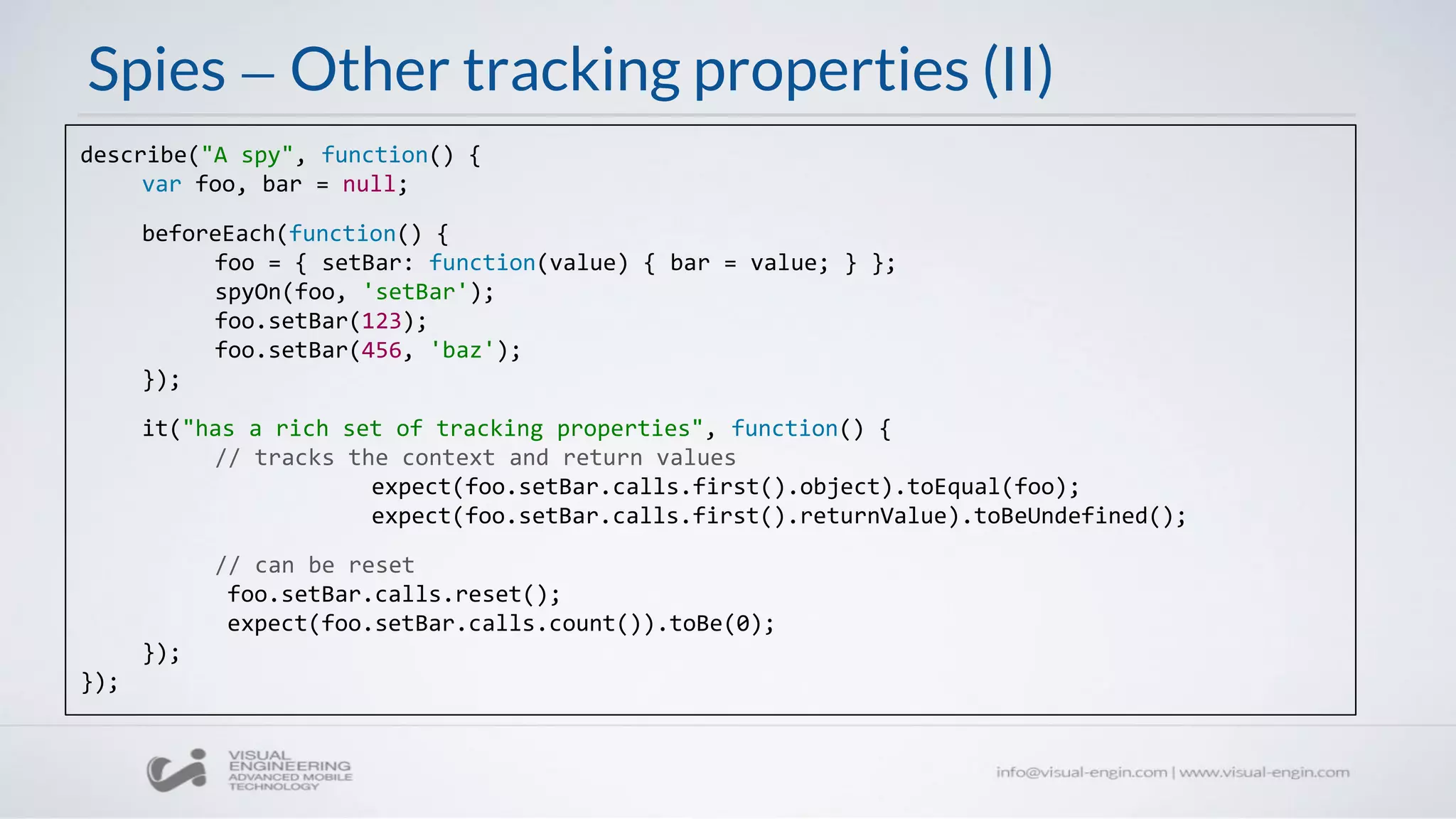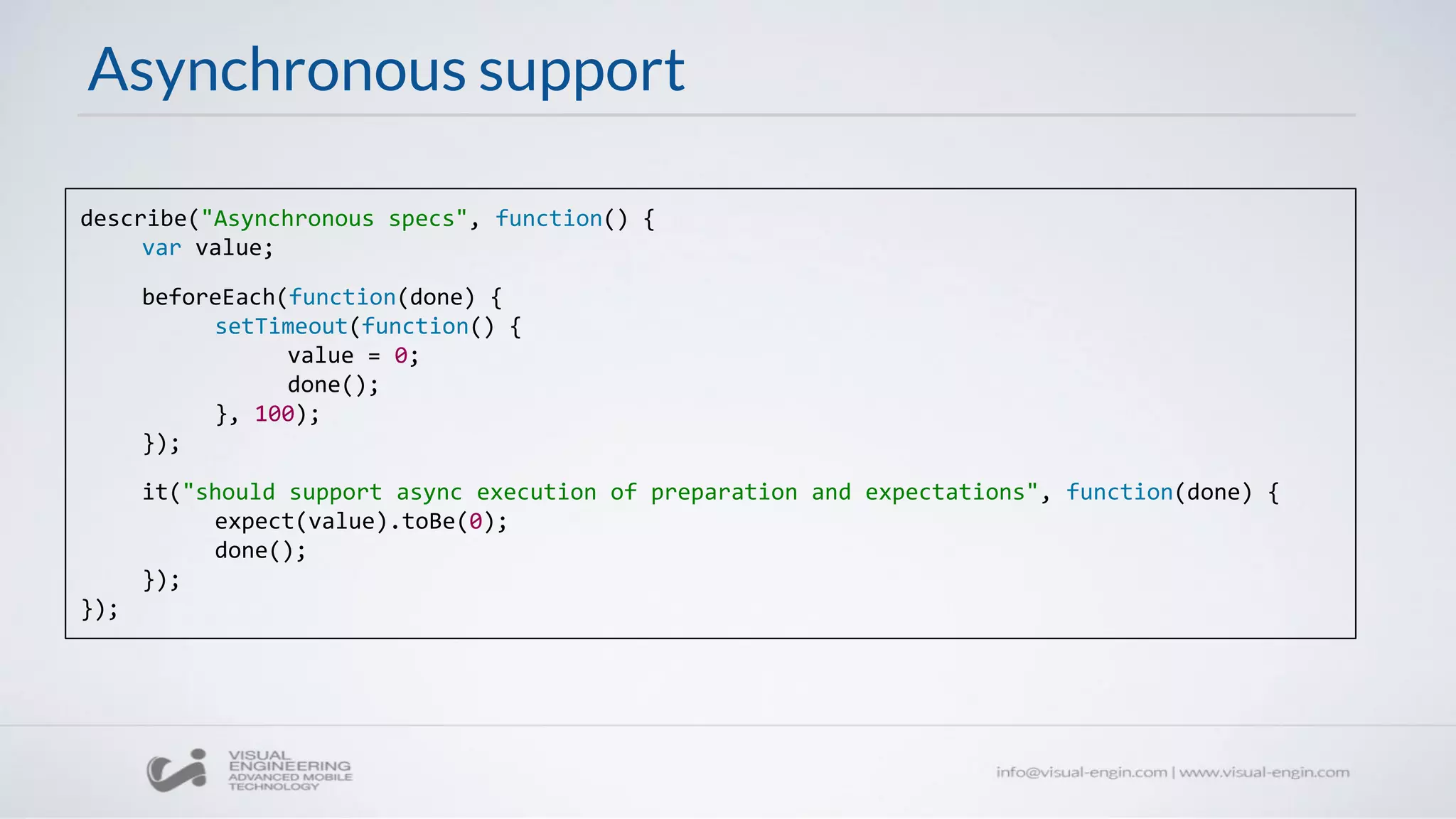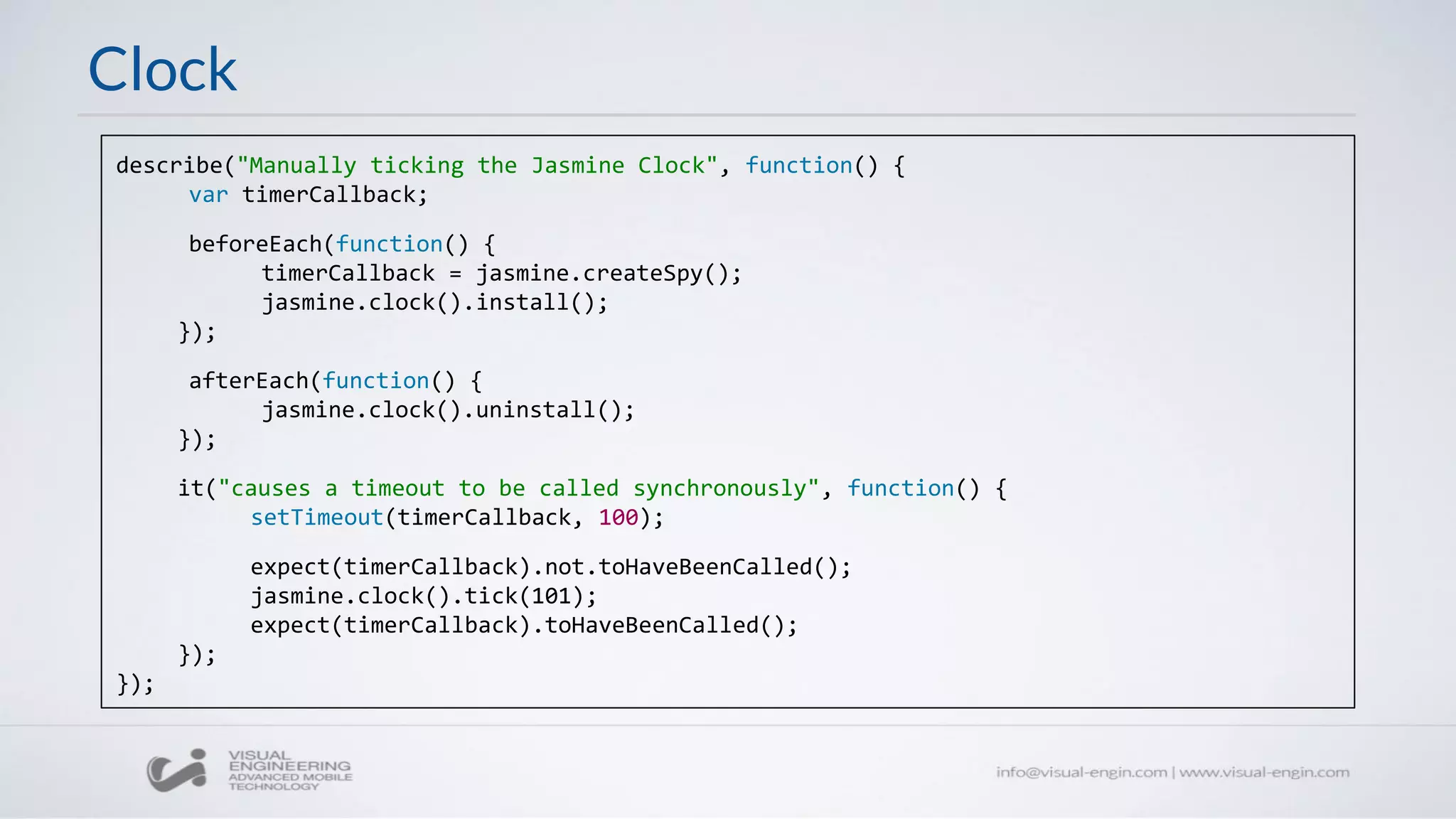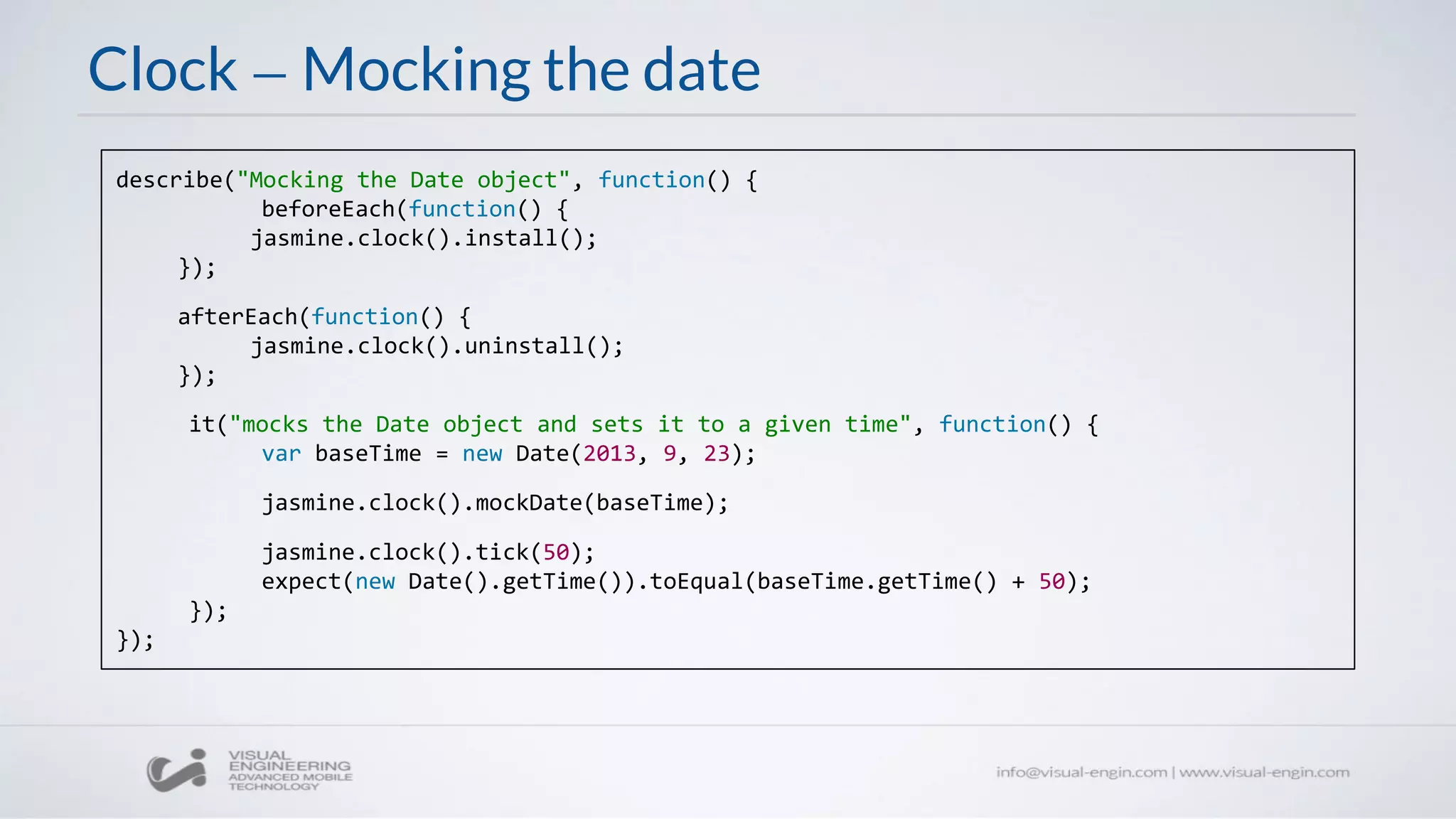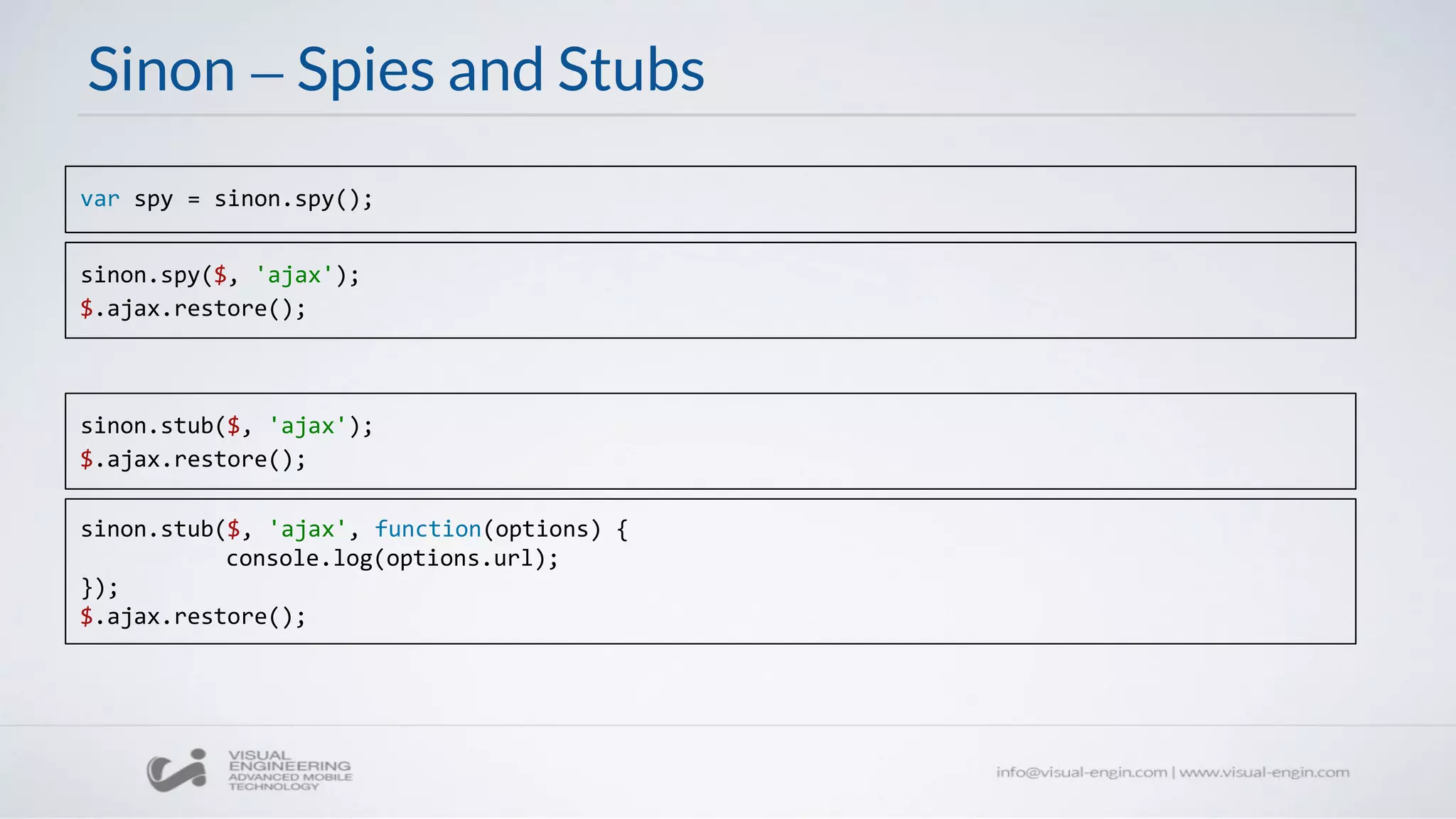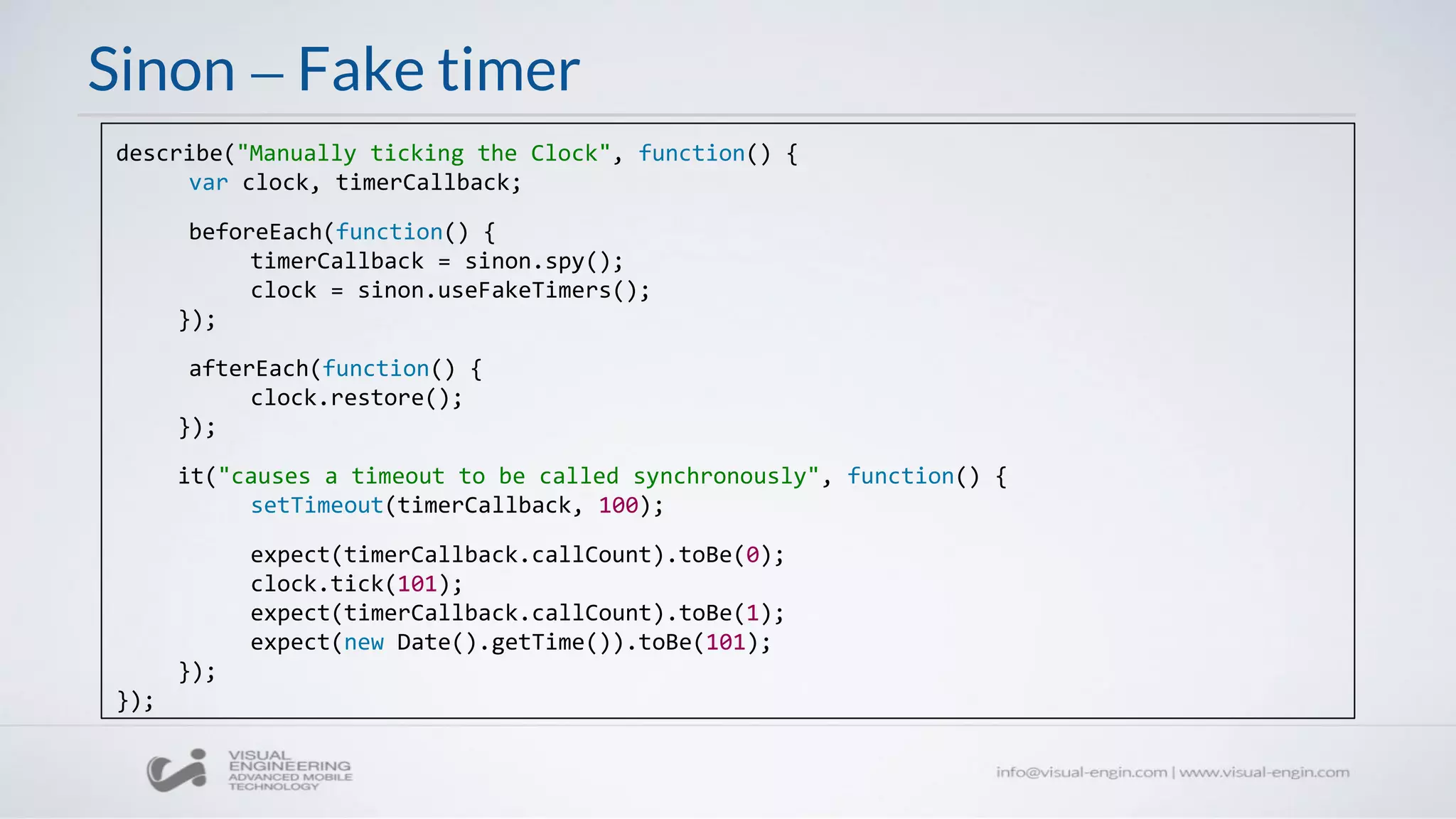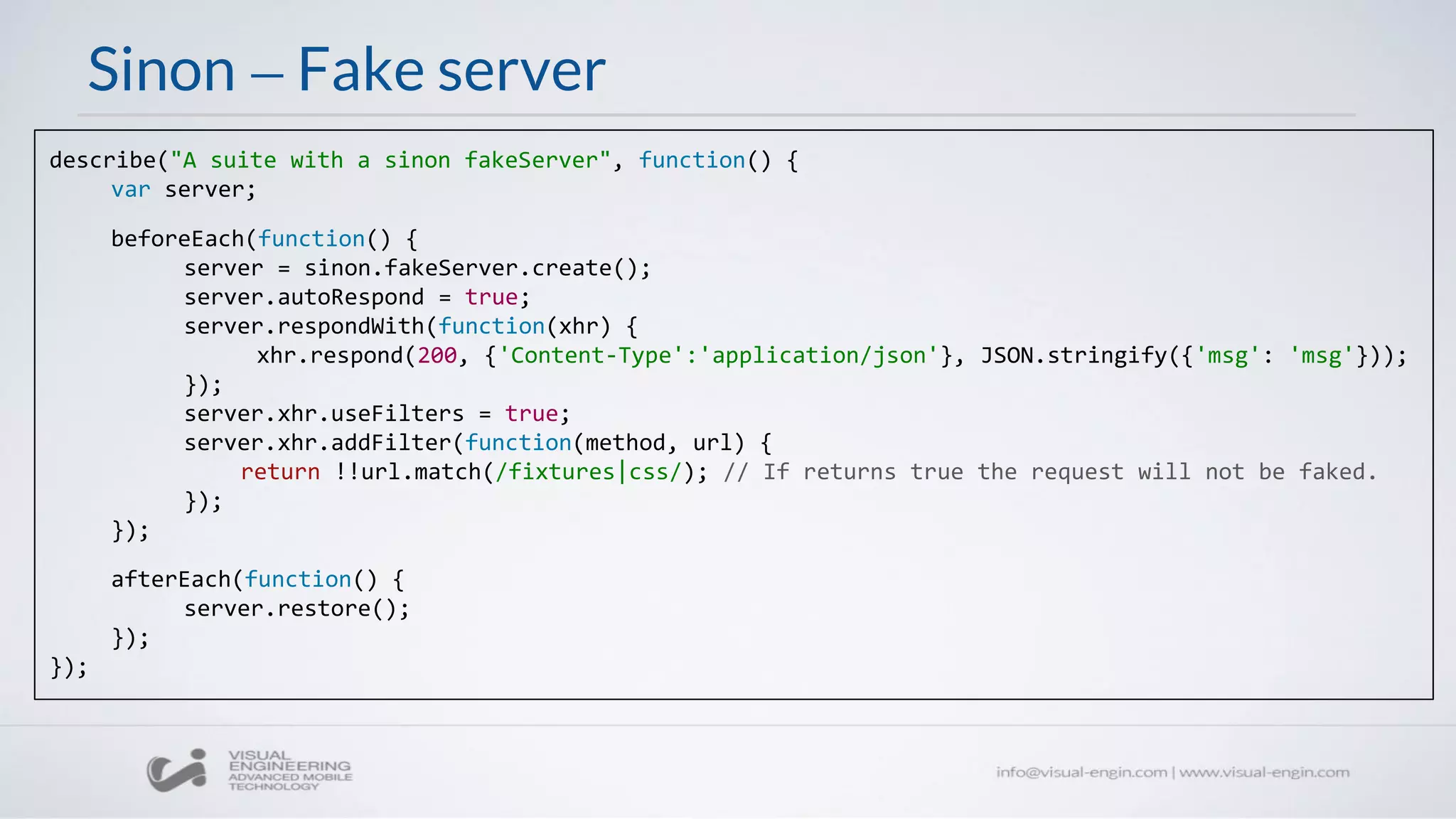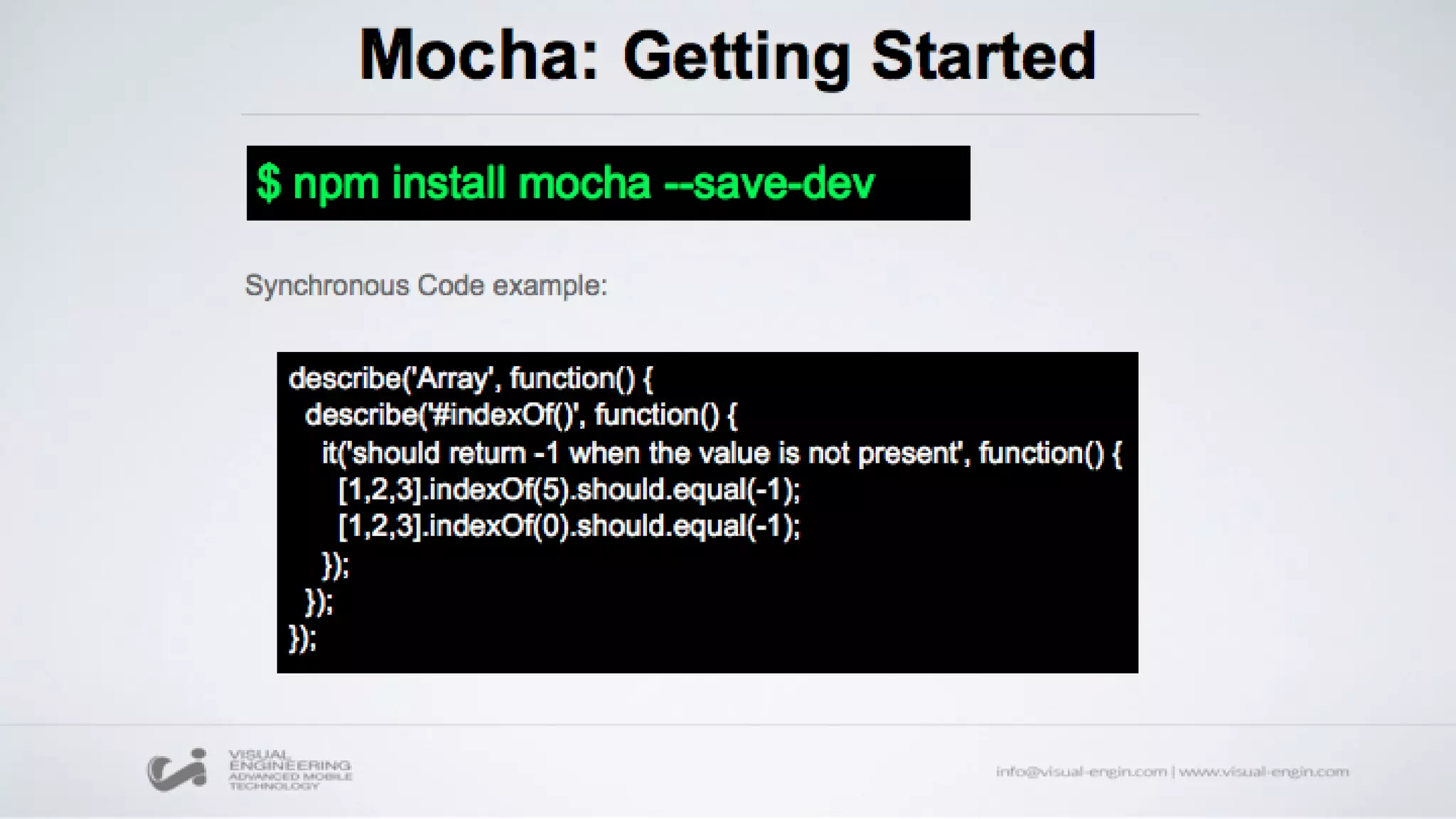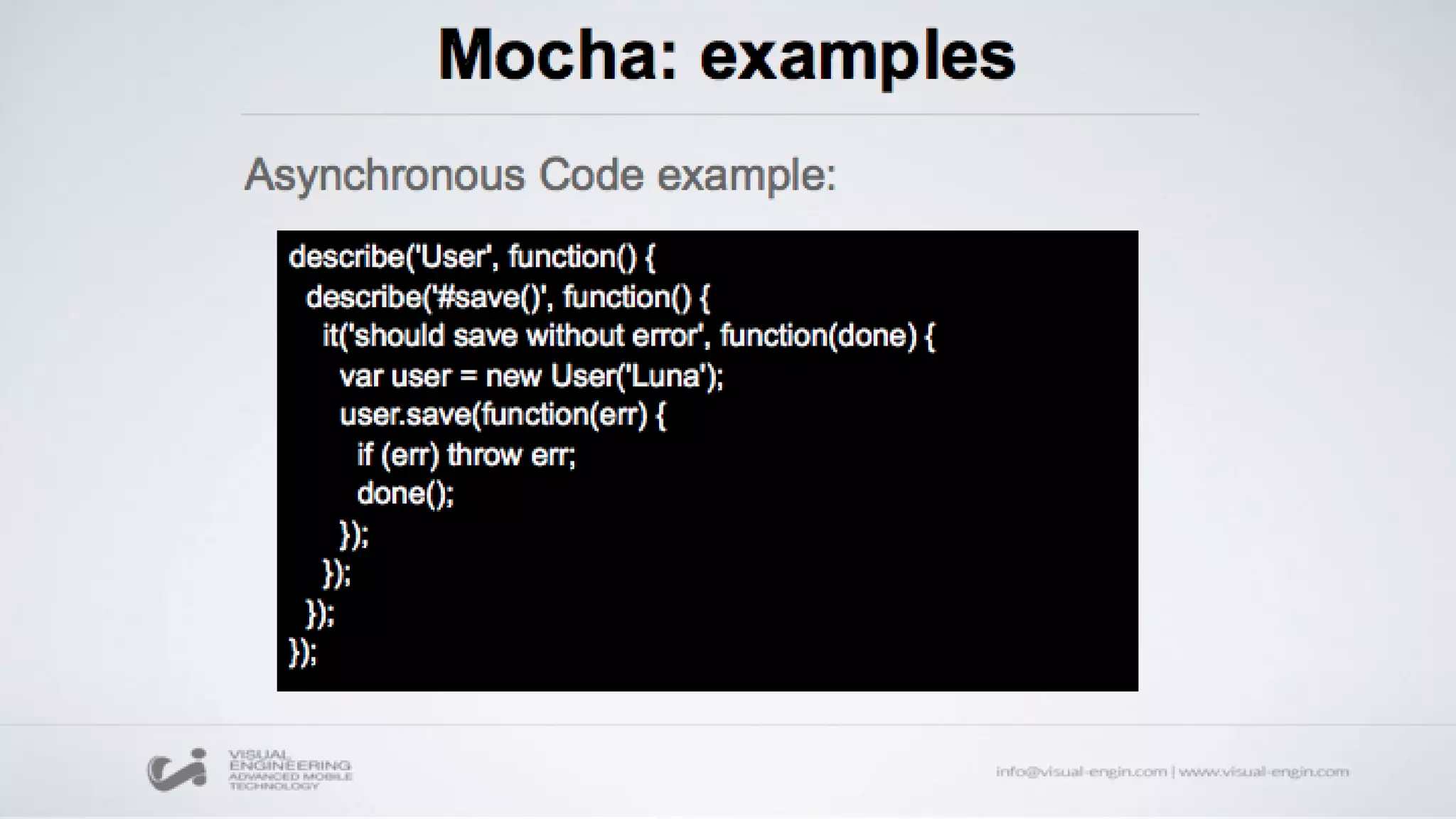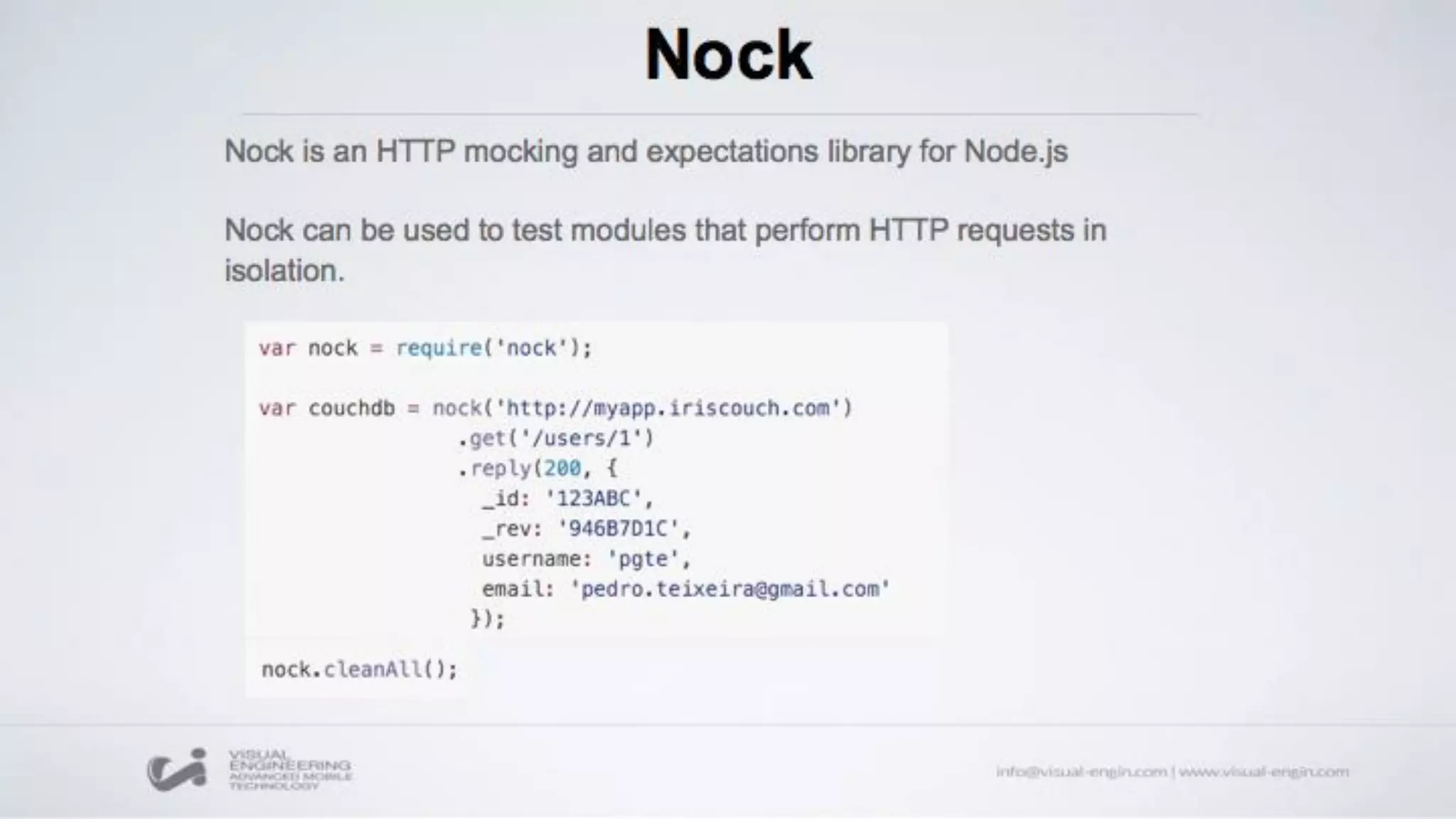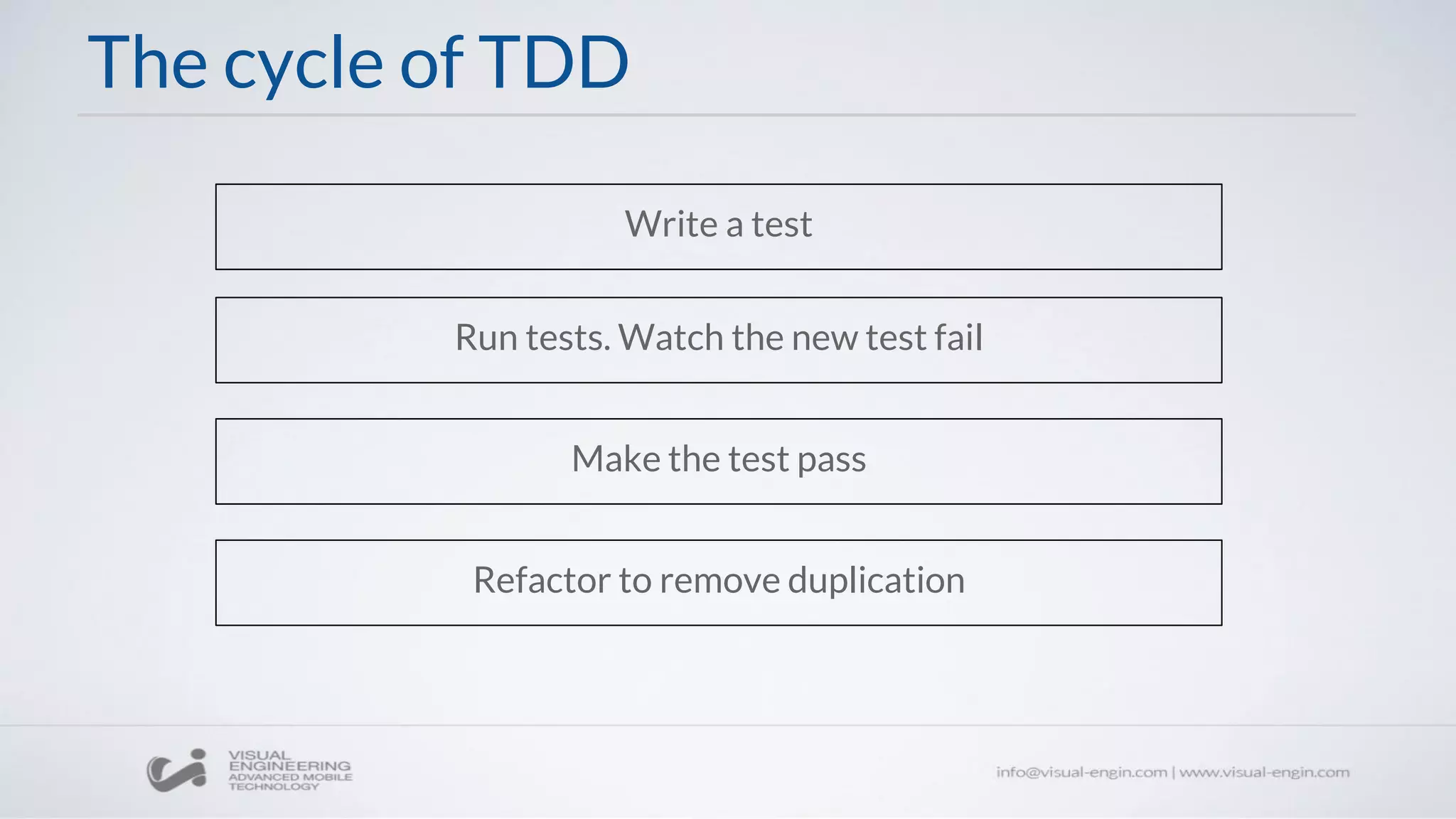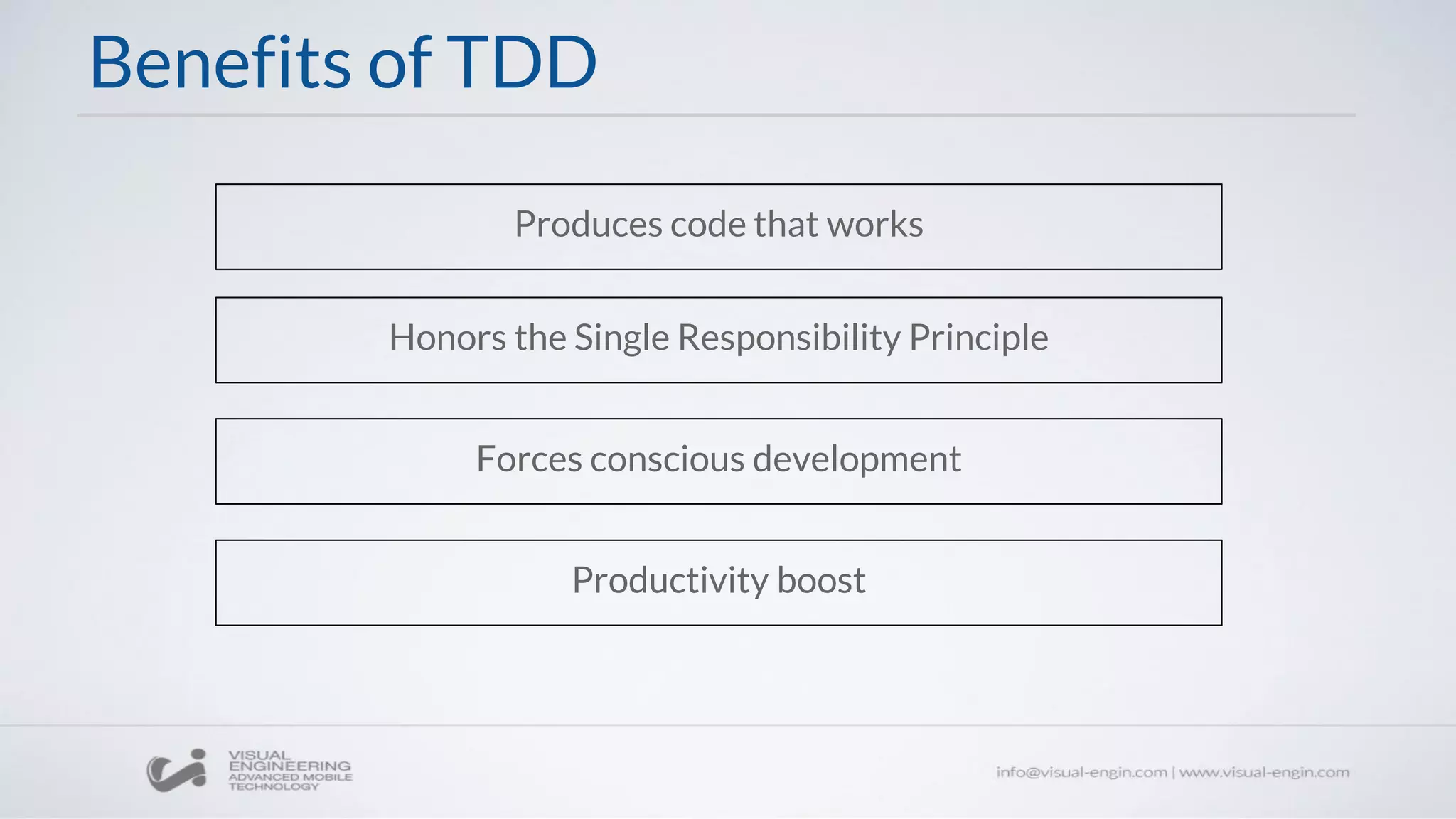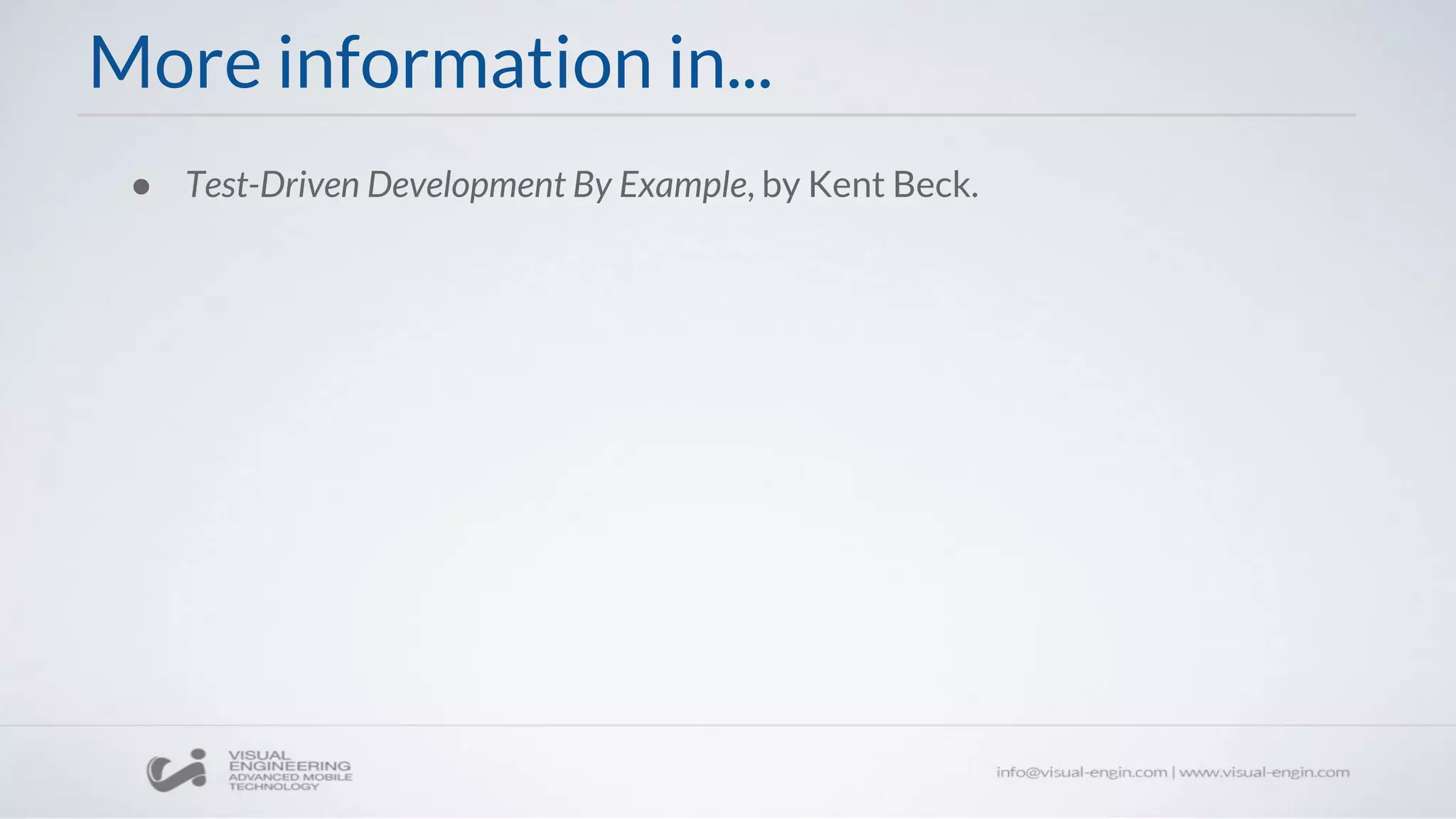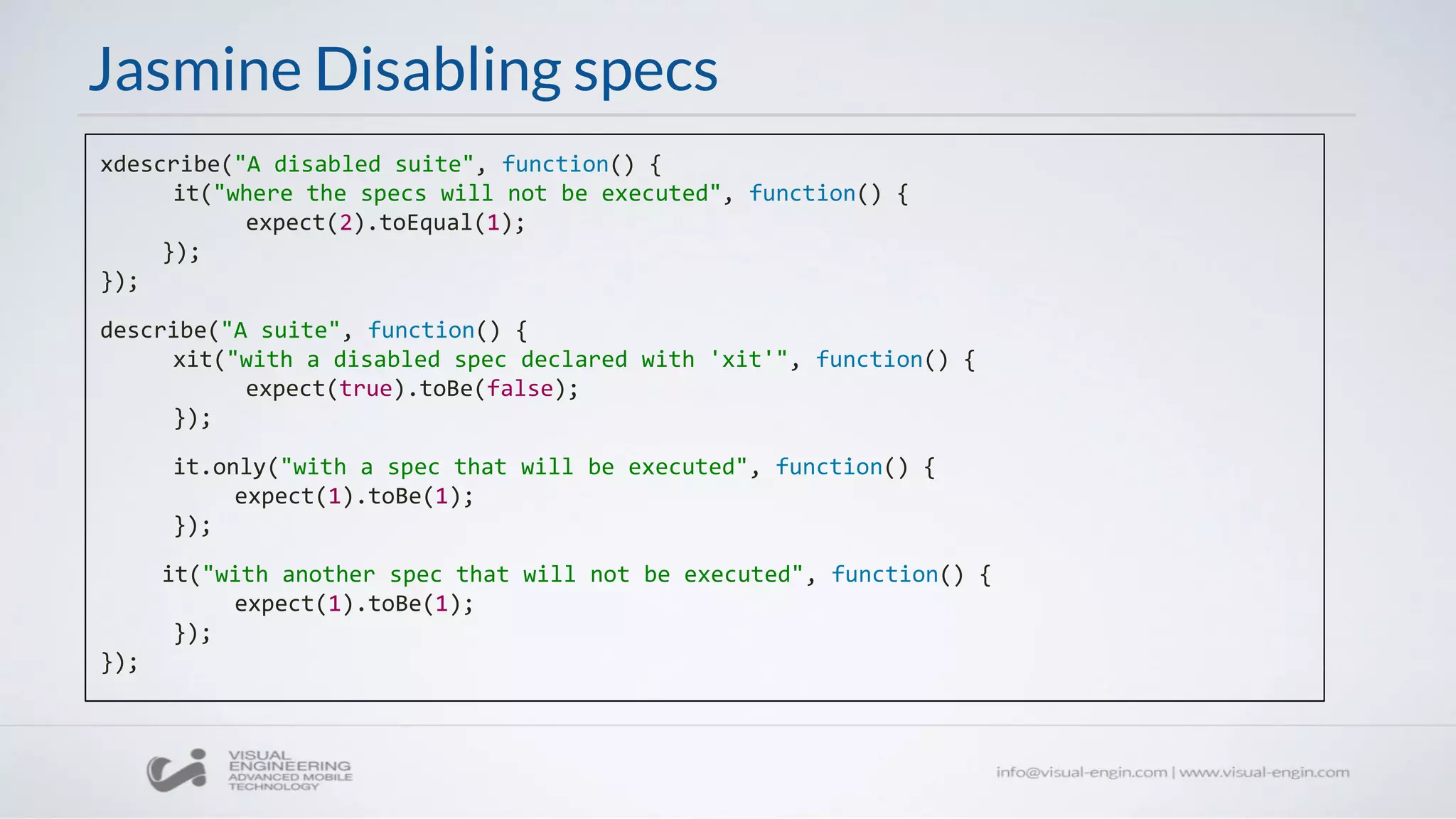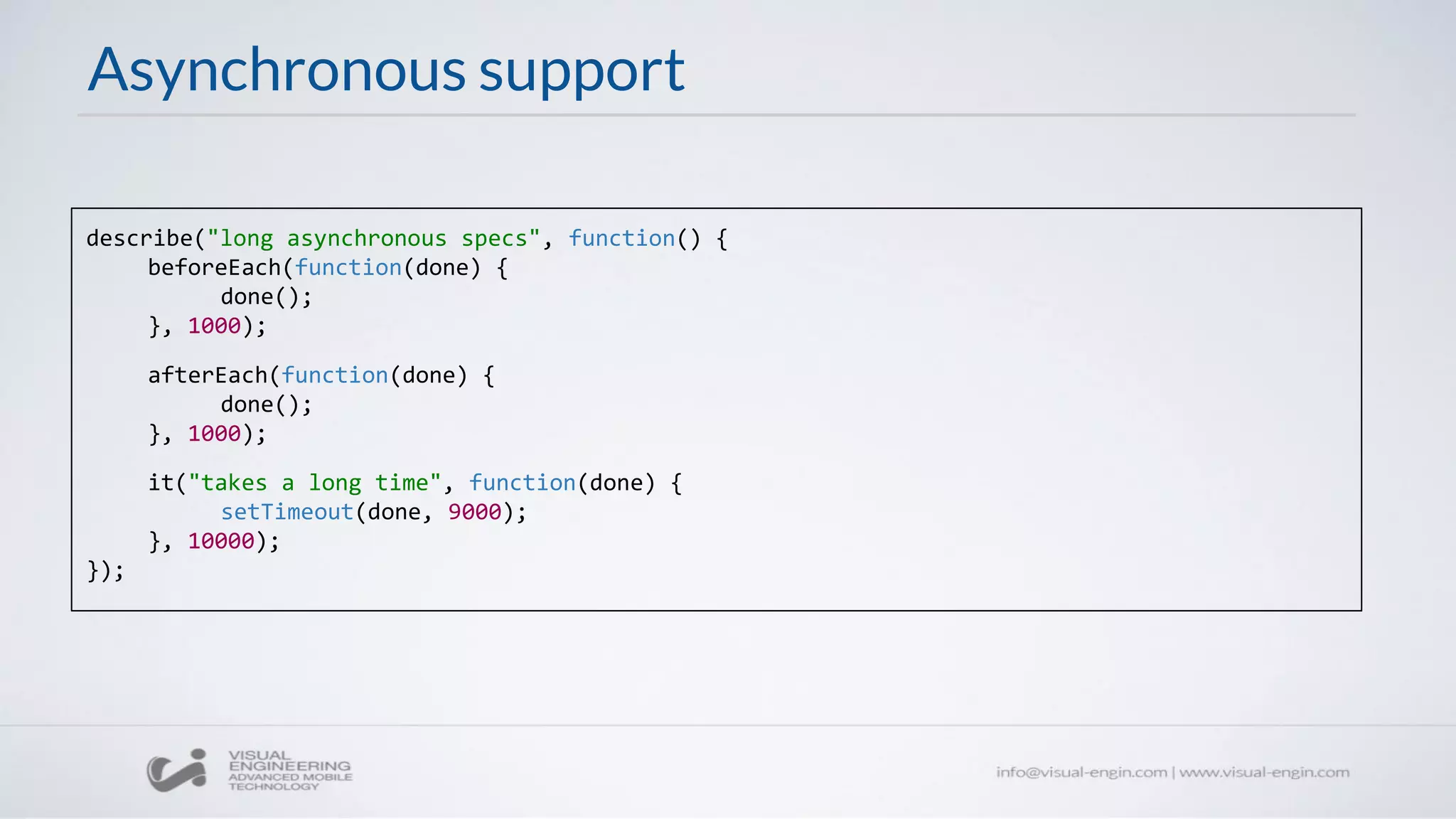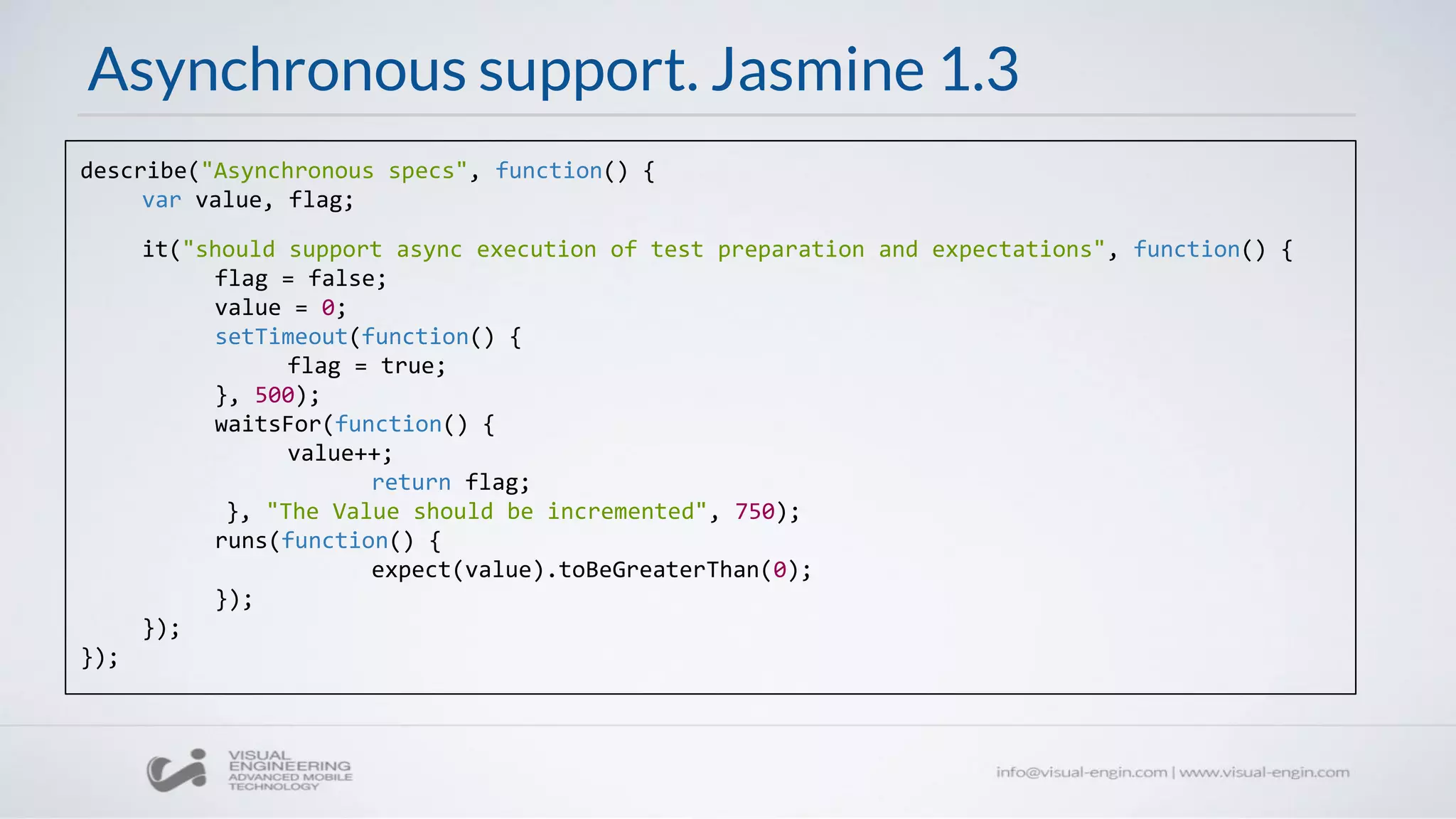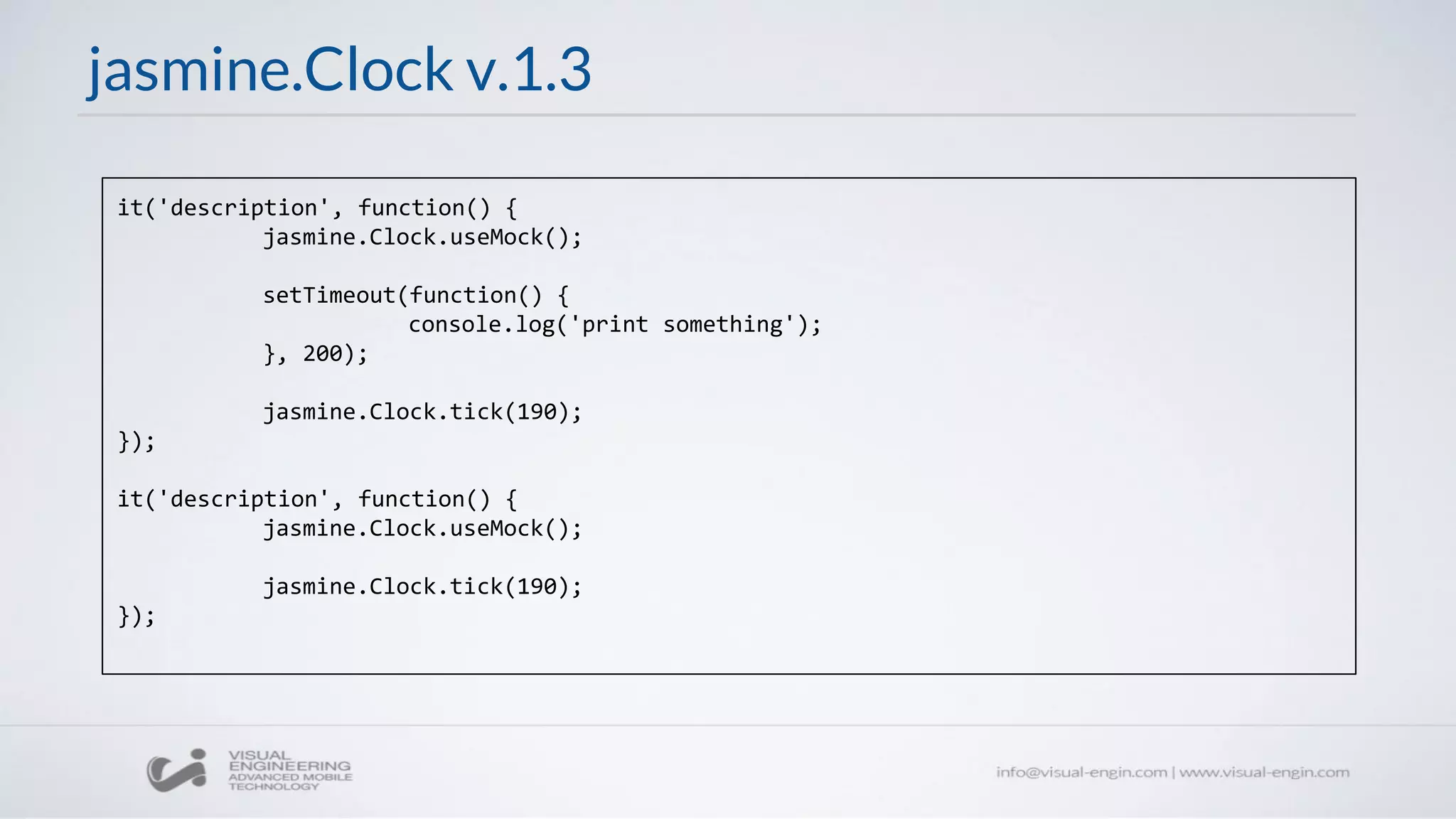The document provides an in-depth overview of JavaScript testing emphasizing the importance of automated testing over manual testing due to its efficiency and reliability. It covers concepts such as test-driven development (TDD), various testing frameworks including Jasmine and Sinon, and illustrates the use of spies, asynchronous testing, and the Karma test runner. Additionally, it addresses common issues and best practices in unit testing while referencing further resources for more comprehensive learning.




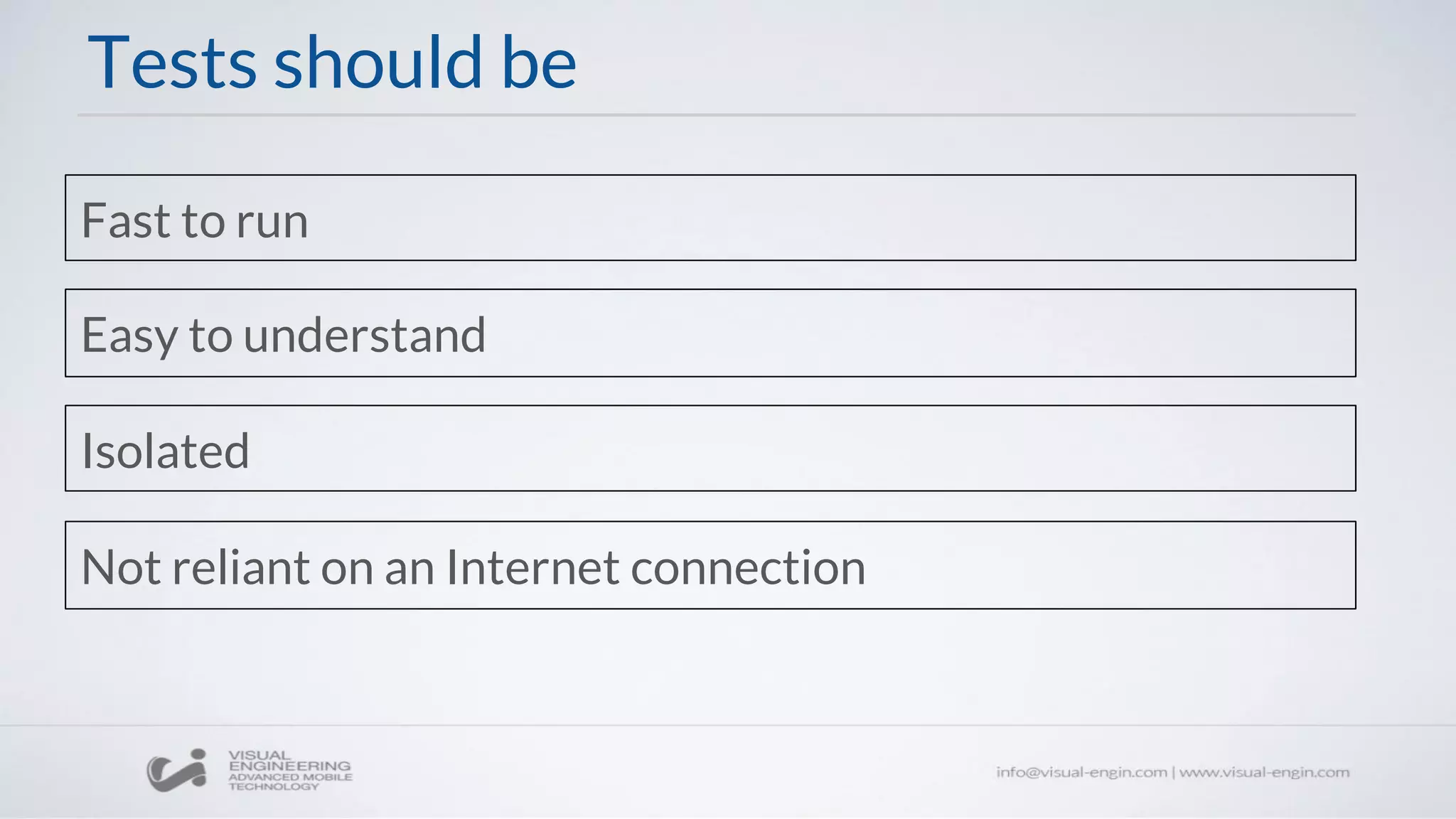
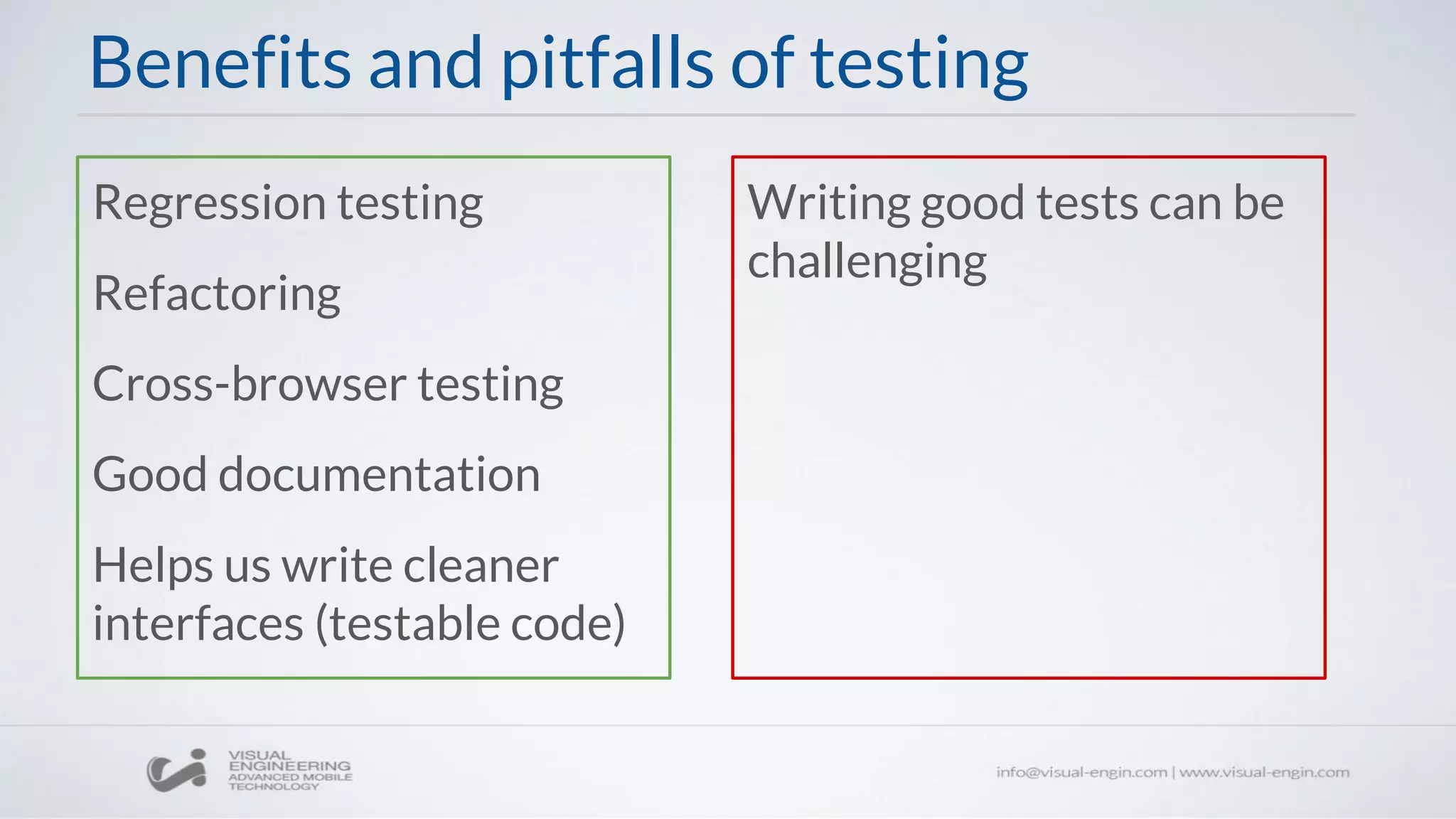

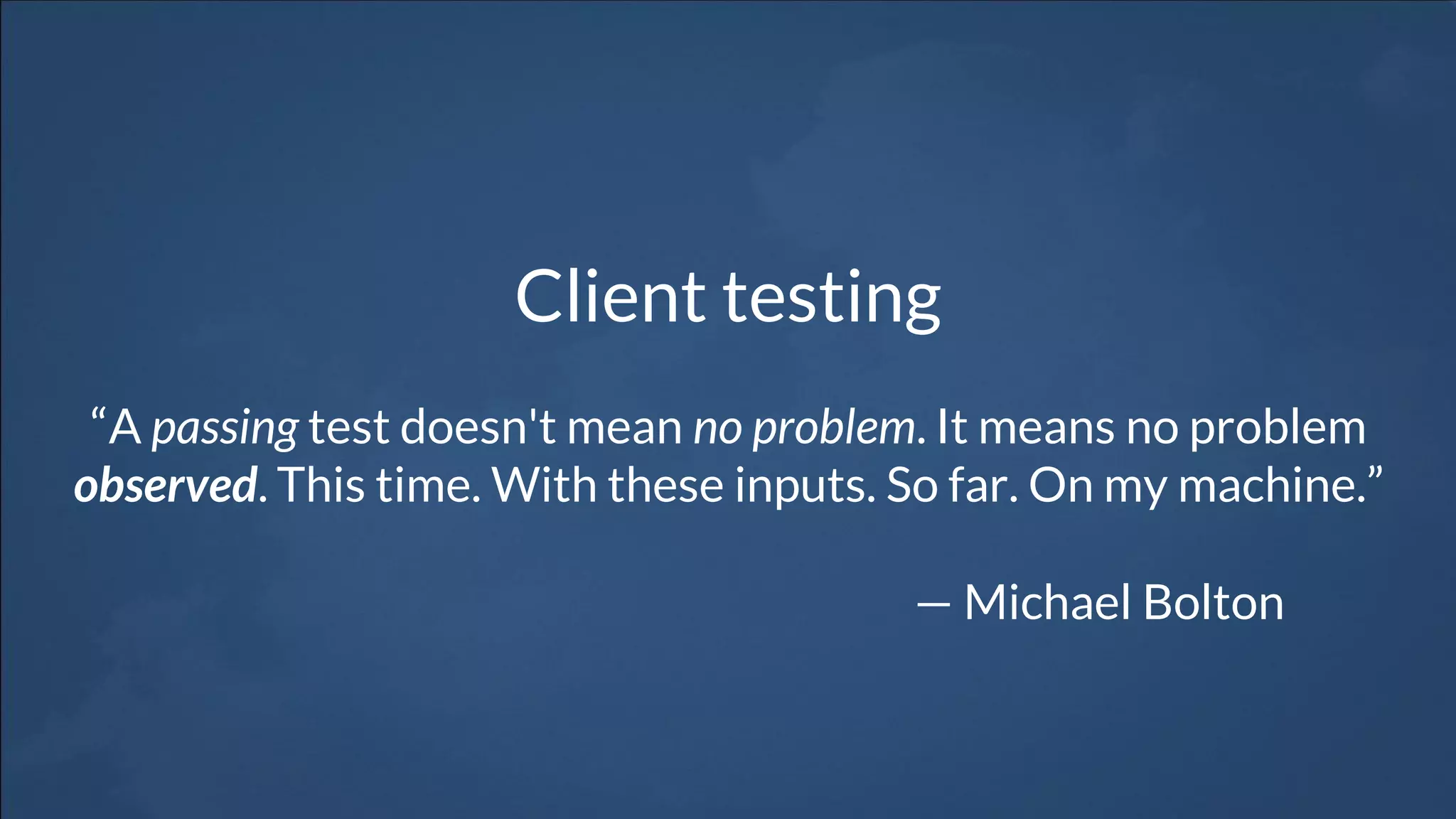

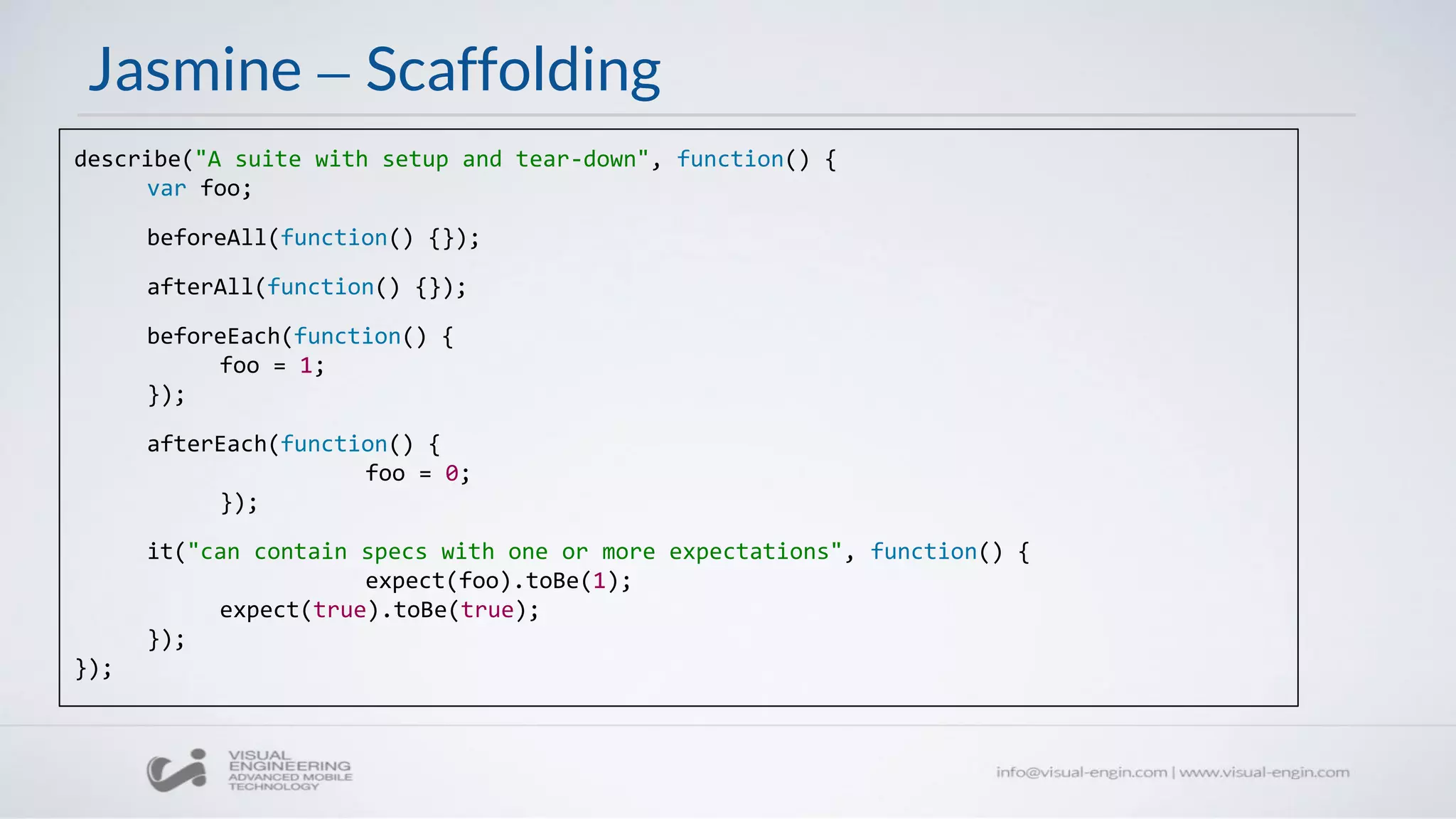
![Matchers
expect(3).toBe(3); // Compares with ===
expect({a: 3}).toEqual({a: 3}); // For comparison of objects
expect('barely').toMatch(/bar/); // For regular expressions
expect(null).toBeDefined(); // Compares against undefined
expect(undefined).toBeUndefined(); // Compares against undefined
expect(null).toBeNull(); // Compares against null
expect('hello').toBeTruthy(); // For boolean casting testing
expect('').toBeFalsy(); // For boolean casting testing
expect(['bar', 'foo']).toContain('bar'); // For finding an item in an Array
expect(2).toBeLessThan(3); // For mathematical comparisons
expect(3).toBeGreaterThan(2); // For mathematical comparisons
expect(3.14).toBeCloseTo(3.17, 1); // For precision math comparison
// For testing if a function throws an exception
expect(function() { throw new Error('Error!'); }).toThrow();
// Modifier 'not'
expect(false).not.toBe(true);](https://image.slidesharecdn.com/javascripttesting-160323084450/75/Workshop-5-JavaScript-testing-11-2048.jpg)
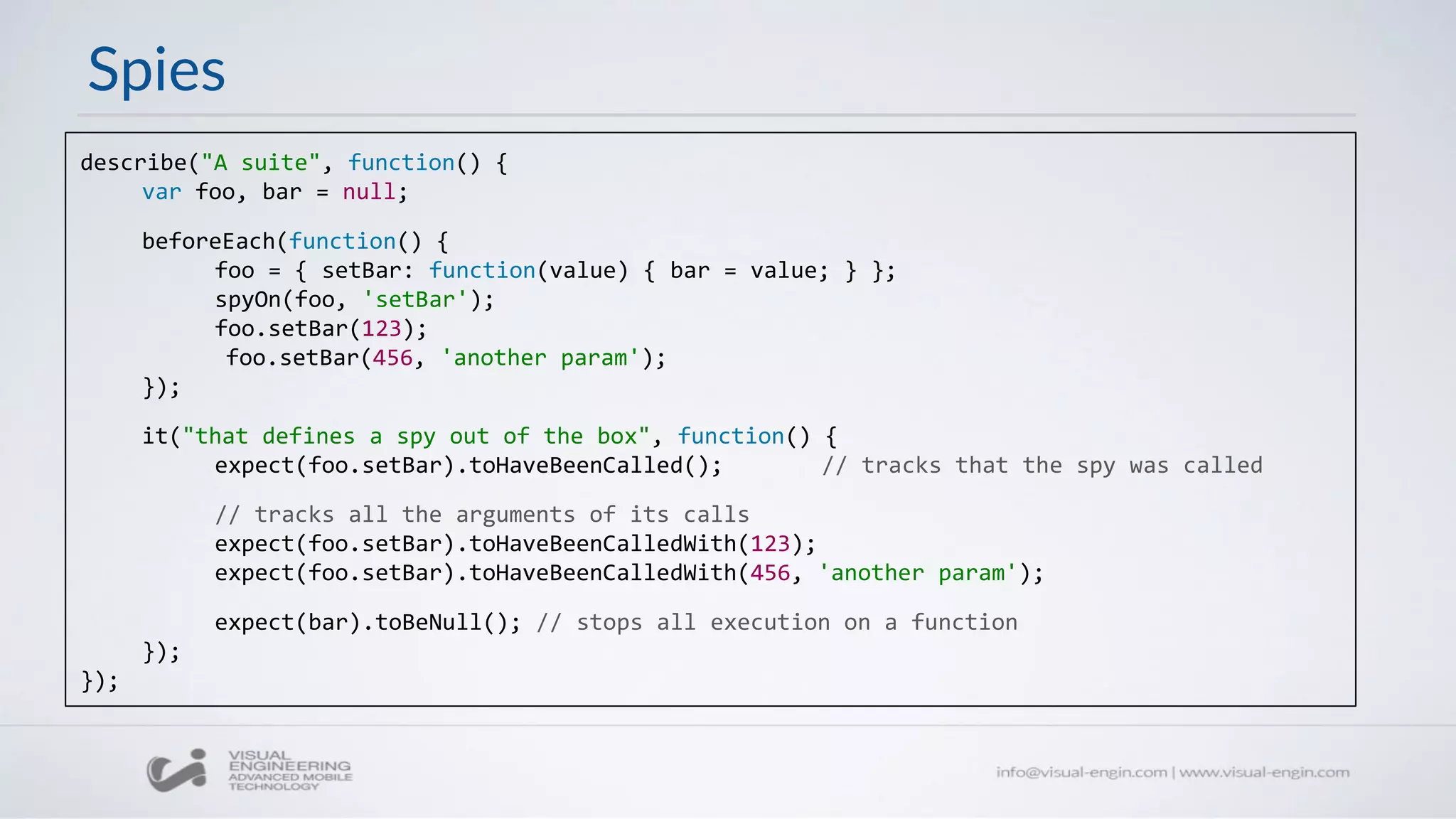
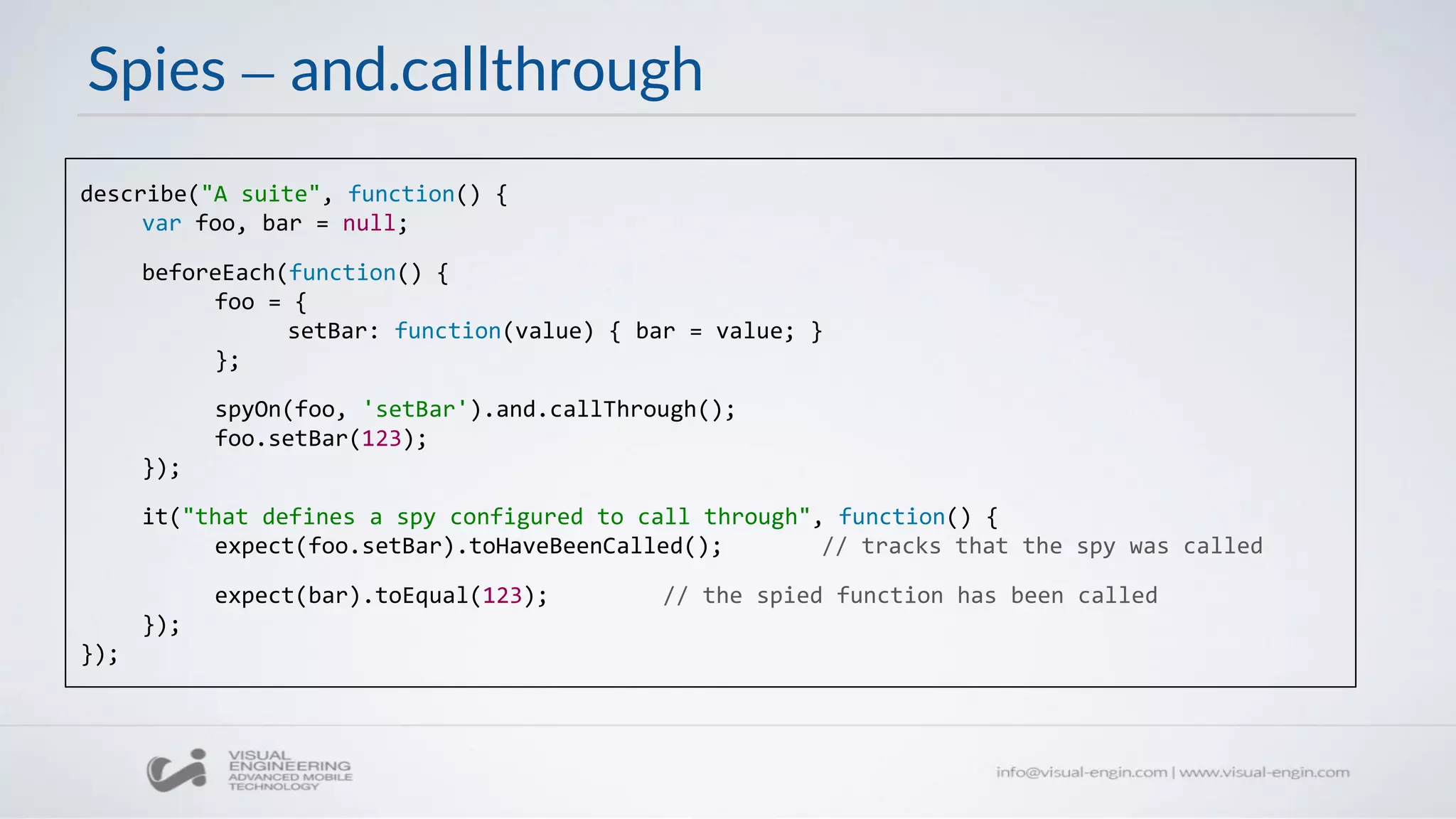
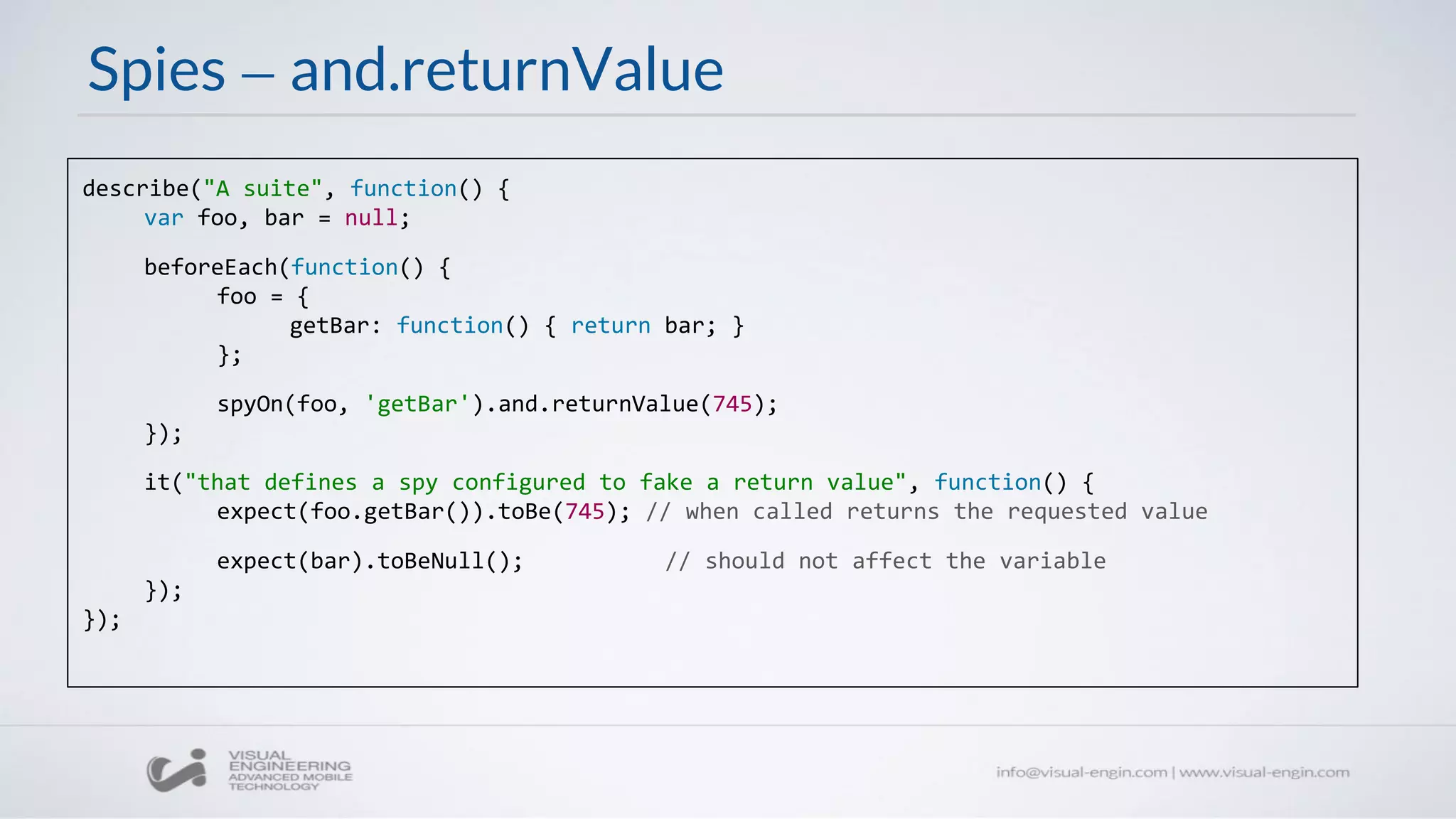
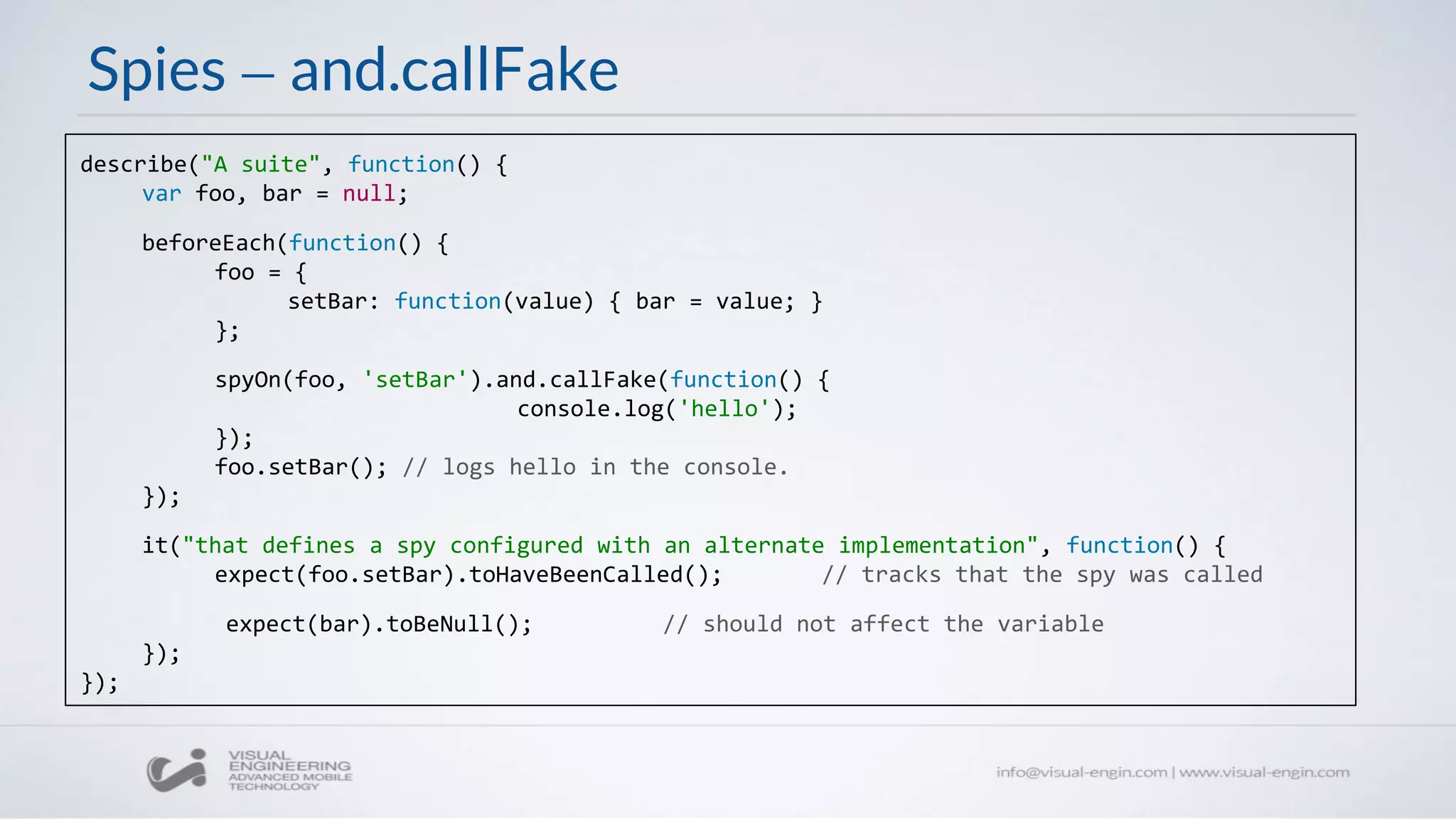
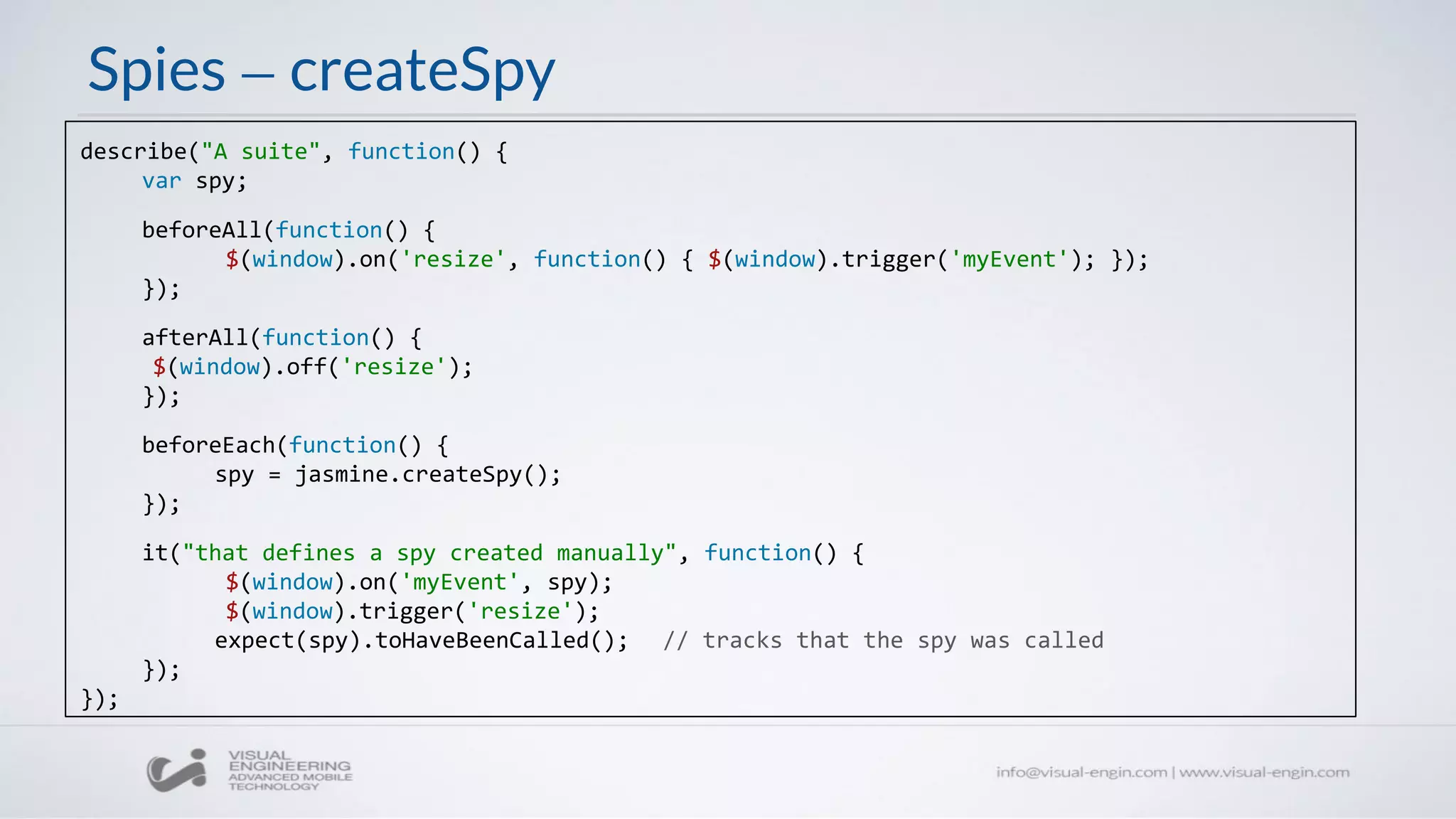
![Spies — Other tracking properties (I)
describe("A spy", function() {
var foo, bar = null;
beforeEach(function() {
foo = { setBar: function(value) { bar = value; } };
spyOn(foo, 'setBar');
foo.setBar(123);
foo.setBar(456, 'baz');
});
it("has a rich set of tracking properties", function() {
expect(foo.setBar.calls.count()).toEqual(2); // tracks the number of calls
// tracks the args of each call
expect(foo.setBar.calls.argsFor(0)).toEqual([123]);
expect(foo.setBar.calls.argsFor(1)).toEqual([456, 'baz']);
// has shortcuts to the first and most recent call
expect(foo.setBar.calls.first().args).toEqual([123]);
expect(foo.setBar.calls.mostRecent().args).toEqual([456, 'baz']);
});
});](https://image.slidesharecdn.com/javascripttesting-160323084450/75/Workshop-5-JavaScript-testing-17-2048.jpg)
